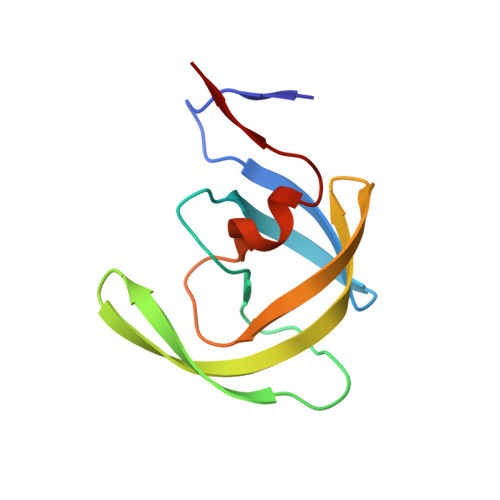Comparing the Accumulation of Active- and Nonactive-Site Mutations in the HIV-1 Protease.
Clemente, J.C., Moose, R.E., Hemrajani, R., Whitford, L.R., Govindasamy, L., Reutzel, R., McKenna, R., Agbandje-McKenna, M., Goodenow, M.M., Dunn, B.M.(2004) Biochemistry 43: 12141-12151
- PubMed: 15379553
- DOI: https://doi.org/10.1021/bi049459m
- Primary Citation of Related Structures:
1SGU, 1SH9 - PubMed Abstract:
Protease inhibitor resistance still poses one of the greatest challenges in treating HIV. To better design inhibitors able to target resistant proteases, a deeper understanding is needed of the effects of accumulating mutations and the contributions of active- and nonactive-site mutations to the resistance. We have engineered a series of variants containing the nonactive-site mutations M46I and I54V and the active-site mutation I84V. These mutations were added to a protease clone (V6) isolated from a pediatric patient on ritonavir therapy. This variant possessed the ritonavir-resistance-associated mutations in the active-site (V32I and V82A) and nonactive-site mutations (K20R, L33F, M36I, L63P, A71V, and L90M). The I84V mutation had the greatest effect on decreasing catalytic efficiency, 10-fold when compared to the pretherapy clone LAI. The decrease in catalytic efficiency was partially recovered by the addition of mutations M46I and I54V. The M46I and I54V were just as effective at decreasing inhibitor binding as the I84V mutation when compared to V6 and LAI. The V6(54/84) variant showed over 1000-fold decrease in inhibitor-binding strength to ritonavir, indinavir, and nelfinavir when compared to LAI and V6. Crystal-structure analysis of the V6(54/84) variant bound to ritonavir and indinavir shows structural changes in the 80's loops and active site, which lead to an enlarged binding cavity when compared to pretherapy structures in the Protein Data Bank. Structural changes are also seen in the 10's and 30's loops, which suggest possible changes in the dynamics of flap opening and closing.
Organizational Affiliation:
Department of Biochemistry and Molecular Biology, University of Florida College of Medicine, Gainesville, Florida 32610, USA. [email protected]















